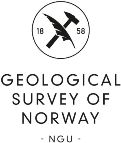

|
Norsk versjon | ||||
| THE NATURAL STONE DATABASE | |||||
| Deposit Area 227 - 601 | |||||
| (Last updated 21.jan.2010) | |||||
Name of Deposit Area : Piggåsen |
| (Object Id : 0227,601,00,00) |
| Location |
| County : | Akershus (02) | Municipality : | Fet (0227) |
| Map 1:50000: | Fet (1914-1) | Map 1:250000: | Oslo |
| Marking point: | Longitude: | 11.2154610 | Latitude: | 59.9565210 |
| EU89-UTM Zone 32 | (Coordinates IS confirmed) |
| X-coord: | 623720 m. | Y-coord: | 6648640 m. |
|
|
| Commodity |
| Main Type: | Soapstone and serpentinite | Sub Type: | Soapstone | |
| Brickstone(Y/N): | N |
| Production |
| Activity: | Stone quarrying | Reserves: | ||
| Prod. method: | Open pit and underground mining | Production: | ||
| Prod. status: | Disused, closed | Volume of dump: |
| Importance |
| Public: | Little Importance (reg. 18.02.2015) |
| Economical: | Minor interest , (Confirmed 04.okt.2004 by Leif Furuhaug) |
| Historical: | Yes , (Confirmed 04.okt.2004 by Leif Furuhaug) |
Products |
| Commercial Name | Product description |
| Kleberstein | Classification : | Colour : | |
| Play of colours : | Uniformity : | ||
| Lithology : | Grain size : |
|
Deposit rock |
| Lithology: | Weathering colour: | |||
| Era: | Period: | |||
| Dating: | Method: | |||
| Genesis: | Form: | |||
| Main texture: |
| Main grain size: | Main alteration: |
| Strike/Dip: | Direction: | |||
| Plunge: |
| Stratigraphic classification of host rock |
| Era: | Period: |
| Province: | ||
| Geotec.unit: | ||
| Tectonic complex: | ||
| Igneous complex: |
| Group: | Formation: |
Information(s) in free text format |
| Description |
| Helland's occurrence Mostuerne, has also been taken from the map sheet Fet (to-day's spelling is Mostuene). The pot-stone occurrence is situated c. 500 m to the ENE of the top of the hill Piggåsen and c. 2-3 km south of the town/suburb Sørumsand. According to the NGU databases, the Mostuene talc/soapstone occurrence is the theme of one or several NGU reports or NGU/Bergarkivet reports. So far, however, it has not been possible to trace this material by means of interactive data search. It remains thus, to make a manual search through the many thousands of reports within the NGU Archives. It should also be mentioned that the mafic and ultramafic rocks of the Sørumsand area have been the object of a thesis at the University of Oslo (Veisal 1988). This work is probably also a good source concerning the actual soapstone deposits in this area (Mostuene, Gullsmedås/Fjellet (Kjellet), plus eventual others). Possibly also Holtedahl (1942) gives valuable information from this district. From Karlsen and Nilsson 1999. |
| Photo(s) from the Deposit area: |
|
Bibliography: |
| From NGU's Reference Archive: |
| Helland, Amund , 1893 |
| Tagskifere, heller og vekstene |
| ;Norges geologiske undersøkelse;TIDSSKRIFTARTIKKEL;NGU; No.10;1-178 pages |
| Karlsen, Tor Arne; Nilsson, Lars Petter , 2000 |
| Talc deposits in Norway |
| ;Norges geologiske undersøkelse;FAGRAPPORT;NGU-rapport; No.99.135;146 pages |
| Abstract: | |
| Information about talc and soapstone deposits registered in NGU's different databases and various available literature have been collected and described in the present report. Around 400 deposits/occurrences are known, but the detail of the available information varies widely. By reading old field-books as well as old manuscripts, maps, etc. dating as far back as A.D.1758, quite a lot of data has been found. The result of the work shows that most described talc in Norway is of ultramafic origin and is associated with serpentinites. The most common mineral association is talc + breunnerite. Different talc-provinces can be defined from the registered and non-registered data, the most important being Nord-Gudbrandsdalen, Altermark and Stølsheimen. While Altermark and Stølsheimen have been investgated in some detail with respect to talc as an industrial mineral, the Nord-Gudbrandsdalen talc province has been investigated both for milling talc and for soapstone use as dimension stone. Deposits that are probably extensive, but have so far not been investigated in detail, include the Lesjehorrungane deposits in the Nord-Gudbrandsdalen region and the Raudfjellet deposit in Nord-Trøndelag. The fractionated metakomatiites (pale green talc-chlorite rocks) of the southern part of the Palaeo-proterozoic Karasjok Greenstone Belt in Finnmark, Northern Norway, possibly represents, by far, the largest accumulations of talc in Norway. These rocks are recently mapped, for the first time, but other critical information is, however, very scarce. |
Fieldsamples |
| Sample No. | Sample type | Miscellanrous | |||
| 227601 | Hand specimen |
|
| The fact sheet was created on 22.11.2024 |
| Questions or comments regarding the fact sheet can be emailed to: ressursdatabaser@ngu.no |
| Copyright © 2024 Geological Survey of Norway |